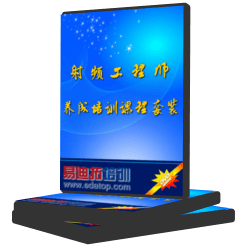- 易迪拓培训,专注于微波、射频、天线设计工程师的培养
美研发光学天线可将信号放大数百万倍
Optical antenna said to boost signals
by R. Colin Johnson
Optical antennas can amplify signals by a million times or more using lasers to induce quantum tunneling between sub-nanometer gaps between metal electrodes, according to researchers at Rice University who say they have accurately characterized optical antennas, which promise to enable single-molecule sensors and other advanced non-linear optical applications.
"An antenna is a metal structure that interacts with radiation, leading to the production of an oscillating voltage," said Rice Professor Doug Natelson. "In our situation, the electromagnetic waves are light (specifically at a wavelength of 785 nanometers in the experiment), and those light waves cause the electrons in our little metal electrodes to slosh around, producing a changing voltage across our nanogap. In that sense it really is an antenna, only for light, rather than for radio waves."
Sensors using the effect could sense even single molecules by harnessing the radiation intensity in the sub-nanometer gap between electrodes, which Rice measured to be "hundreds of thousands or millions of times higher than that from the incident laser," said Natelson. "For example, closely spaced metal nanoparticles have been used to enhance fields sufficiently in the interparticle gap to allow single-molecule Raman spectroscopy."
Closely spaced metal electrodes act as optical antennas because their electrons can be excited with a laser, inducing plasmons—collective oscillations of the free electrons—whose evanescent electromagnetic fields are thousands of times stronger than the incident light. Unfortunately, these fields have been very difficult to measure and characterize. Now Natelson and doctoral candidate Dan Ward have found a relatively easy way to measure the fields between sub-nanoscale electrodes on optical antennas.
By cooling the electrodes to 80 degrees Kelvin (-315 degrees Fahrenheit) and simultaneously measuring the lower-frequency electrically driven current and the higher-frequency optically driven current, the researchers were able to deduce the voltage amplification factor.
Rice collaborated with the Karlsruhe Institute of Technology (Germany) and the Autonomous University of Madrid (Spain) on the project. Funding was provided by the Robert A. Welch Foundation, the Lockheed Martin Advanced Nanotechnology Center of Excellence, the Deutsche Forschungsgemeinschaft, the Baden-Württemberg Siftung, the Bio-Inspired Approaches for Molecular Electronics and the Spanish Ministry of Science and Innovation.
如何成为一名优秀的射频工程师,敬请关注: 射频工程师养成培训
上一篇:RF
MEMS有效改善智能手机天线性能?
下一篇:职业生涯中期的工程师的薪资前景

